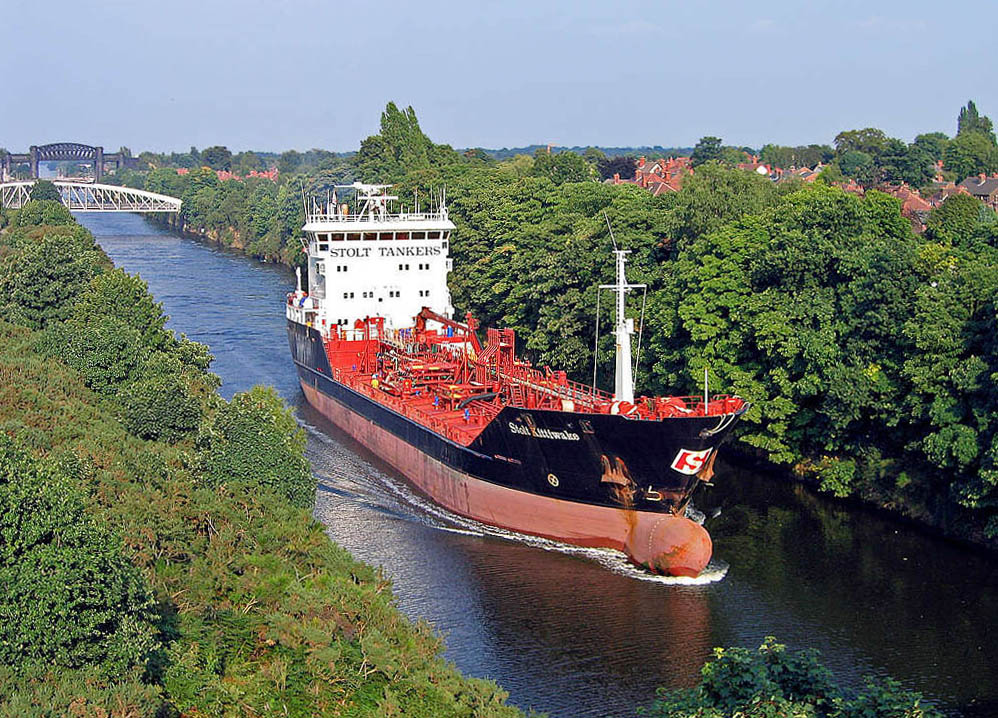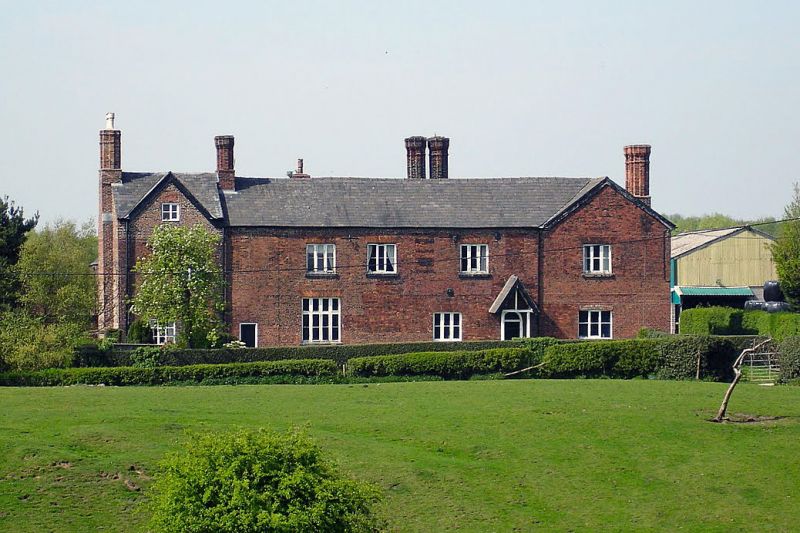Irlam is a built-up areaCategorisation of UK census data that corresponds more closely to the traditional towns, villages and cities that people associate with where they live than do the administrative boundaries. in the City of Salford, Greater Manchester, England, historically in the county of Lancashire. It includes Irlam, Lower Irlam and Cadishead, the most southwesterly settlement in the City of Salford.
Until the course of the River Irwell was altered in the late 19th century, to form part of the Manchester Ship Canal
36-mile-long (58 km) inland waterway in the North West of England linking Manchester to the Irish Sea.
36-mile-long (58 km) inland waterway in the North West of England linking Manchester to the Irish Sea., Irlam sat on the river’s northern bank. The ship canal stimulated the growth of Irlam as an inland port and its industrial development; for much of the 20th century steel manufacture was a major source of employment. The former steelworks are now the site of the Northbank Industrial Estate.
The settlement began life as a ribbon development along the Liverpool to Manchester road.[1]
Geography
Lying on flat ground on the south side of the M62 motorway and the north bank of the Manchester Ship Canal
36-mile-long (58 km) inland waterway in the North West of England linking Manchester to the Irish Sea.
36-mile-long (58 km) inland waterway in the North West of England linking Manchester to the Irish Sea., Irlam’s geography is varied; the northern half is farmed moss land, whereas the southern half is predominantly residential.[2] It lies 6.7 miles (10.8 km) southwest of Salford and 7.6 miles (12.2 km) southwest of Manchester, forming a continuous urban area with Cadishead to the southwest, and Flixton and the Metropolitan Borough of Trafford to the southeast across the ship canal.
History
Irlam
Irlam almost certainly takes its name from the nearby River Irwell; it was known in the 13th century as Irwellham.[3] Until the arrival of the Cheshire Lines Committee railway and the opening of Irlam railway station in 1873, it remained a largely undeveloped village, on the southern edge of the peat bog known as Chat MossLarge area of peat bog that makes up 30 per cent of the City of Salford, in Greater Manchester, England.[4]
From at least the beginning of the 13th century Irlam was held by the de Irlam family, whose seat was Irlam Hall. By 1688 it had become the home of Thomas Latham, who played an important part in bringing William of Orange to the throne of England in 1689.[5]
The industrial development of Irlam owed much to the construction of the Manchester Ship Canal, completed in 1894, which effectively made the River Irwell navigable to large ocean-going ships as far as Manchester Docks.[4]
Steel manufacture was a major source of employment in Irlam for a large part of the 20th century. The Partington Steel and Iron Company opened the first steelworks in Irlam in 1910. It subsequently became a part of the Lancashire Steel Corporation, and later British Steel Corporation. Rationalisation and the concentration of steel manufacture into fewer, larger sites, meant that by 1979, all steel production in Irlam had ceased.[6] The former steelworks are now the site of the Northbank Industrial Estate, which is a major source of employment for local residents.[2]
Cadishead
The earliest record of Cadishead dates to 1212, and shows that the whole of Cadishead – then called Cadewalesate – was rented from King John by Gilbert Notton for four shillings (20p) a year. The name derives from the Old English words wælla and set, and Cada, a personal name; it means the “dwelling or fold by the stream of a man called Cada”.[7]
Governance
Irlam Urban District was established in 1894,[8] the year the ship canal was officially opened.[9] In 1974, as a result of the Local Government Act 1972, the district council was abolished and Irlam has, since 1 April 1974, formed part of the Metropolitan Borough of the City of Salford, in Greater Manchester.[10]
Irlam is within the UK parliamentary constituency of Worsley and Eccles South, which elects one member of parliament.[11]
Demographics
As at the 2021 Census, the built-up areaCategorisation of UK census data that corresponds more closely to the traditional towns, villages and cities that people associate with where they live than do the administrative boundaries. of Irlam has a population of 19,712, occupying an area of 516.9 hectares (1,277.3 acres) giving a population density of 38.1 persons per hectare.[12]
Landmarks and listed buildings
Great Woolden Hall
Great Woolden Hall is a 17th-century Grade II listedStructure of particular architectural and/or historic interest deserving of special protection. brick house with a slate roof, later altered, extended and divided into three dwellings. There are two storeys with attics, five bays – the outer of which are gabled – and rear gabled wings. On the front is a porch. Most of the windows are casements, and there are two blocked mullioned windows in the right return.[13]
155a Liverpool Road
 Built-up area in the City of Salford, Greater Manchester, England, lying on flat ground on the south side of the M62 motorway and the north bank of the Manchester Ship Canal.
Built-up area in the City of Salford, Greater Manchester, England, lying on flat ground on the south side of the M62 motorway and the north bank of the Manchester Ship Canal.A Grade II listed 17th-century house in rendered brick with a thatched roof, 155A Liverpool Road has two storeys, three bays, and a lean-to extension on the left. The windows are casements, and there are wattle and daub panels in the roof trusses.[14]



